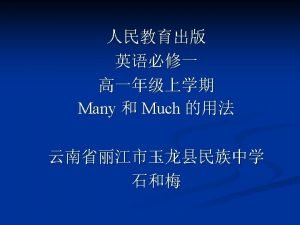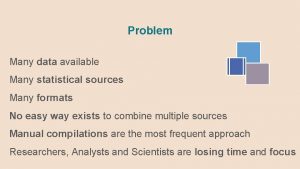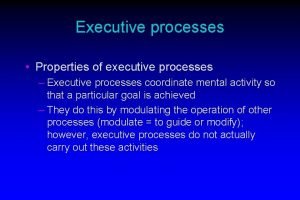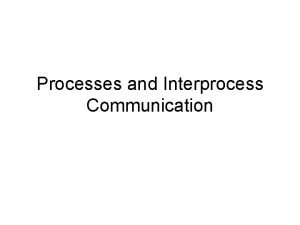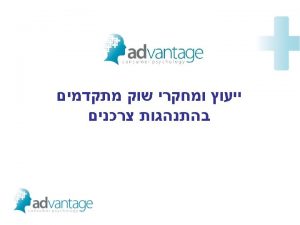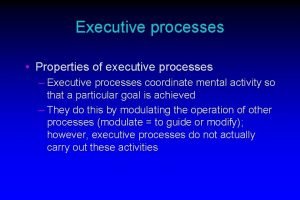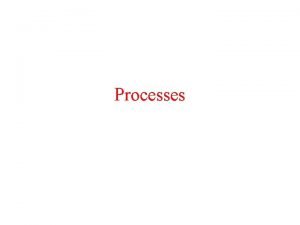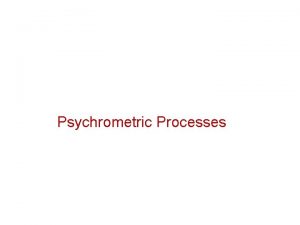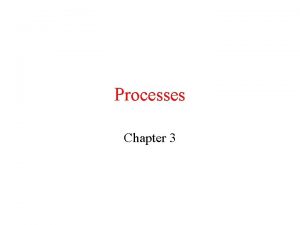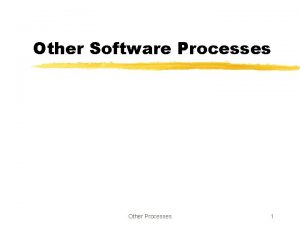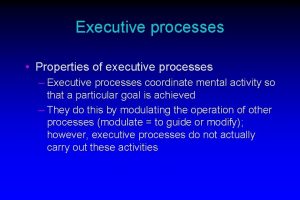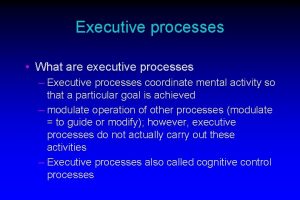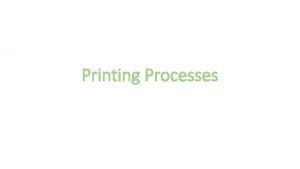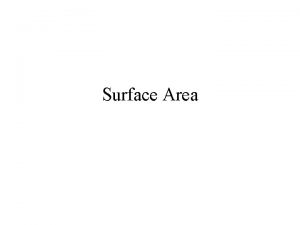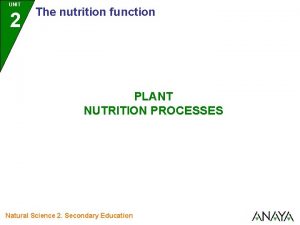NUTRITION NUTRITION Nutrition refers to the many processes


























- Slides: 26

NUTRITION

NUTRITION Nutrition refers to the many processes involved in the ingestion, digestion, absorption and the use of foods and fluids by the body. n n n o Ingestion – the process of taking food and fluids into the body Digestion – the process of physically and chemically breaking down food so that it can be absorbed for use by the cells. Absorption – the process by which substances pass through the intestinal wall and into the blood. Good nutrition is needed for growth, healing and the maintenance of body functions.

NUTRITION NUTRIENTS o o A nutrient is a substance that is ingested, digested, absorbed and used by the body. The amount of energy provided by a nutrient is measured in calories. A calorie is the amount of energy produced as the body burns food. Nutrients can be grouped into the following: n n n Protein Carbohydrates Fats Vitamins Minerals Water

NUTRITION NUTRIENTS o PROTEIN – compounds of carbon, hydrogen, oxygen and nitrogen arranged as strands of amino acids (Building blocks of protein). Needed for tissue growth and repair n n o CARBOHYDRATES- compounds composed of single or multiple sugars. n n o Meat Fish Eggs Milk The ideal nutrient to meet your body’s energy needs, keeps your digestive system moving and feeds your brain and nervous system. Simple sugars – (simple carbs) sugar, fruits, juices Starches – (complex carbs) breads, pasta, rice Fibre – bran, nuts, seeds. FATS – Provide energy, metabolize vitamins, add flavour. Fat is necessary to your diet in small amounts. There are 3 types of fat n n n Saturated fat – found in animal and dairy products Unsaturated fats – found in fish and vegetable oils Trans fat – created when oil is chemically made into a solid form of fat. Increases flavour and shelf life

NUTRITION o VITAMINS – needed daily for normal function and growth. Vitamins are specific for specific body functions. Vitamin deficiencies can result in illness n See pg 555 Box 27 -1 o MINERALS – chemical substances found in both plant and animal o See pg 556 Box 27 -2 o WATER – The most important nutrient. Needed for foods. Each mineral is for specific body functions n n n o temperature, delivering nutrients removing wastes. Death can result from too much or too little

NUTRITION CANADA’S FOOD GUIDE o Canada’s Food Guide was developed to help promote healthy food choices. The food guide includes (for age group 51+) : n n Grain Products : Vegetables & Fruit : Milk Products : Meat & Alternatives : Female 6 Female 7 Female 3 Female 2 Male 7 servings/day Male 3 servings/day FOOD LABELS o Nutritional labels are required on food packages and have 3 components: n n n List of ingredients Nutrition facts Nutrition claims

NUTRITION

NUTRITION CAFFEINE INTAKE o 400 mg day is considered safe o Can help with alertness and concentration for some and headaches, insomnia, nervousness and irritability in others. o Pregnant women should abstain or at the very least limit intake to 300 mg/day o 1 cup (250 mls) of coffee = 179 mg of caffeine o Caffeine is also found in chocolate, cola, energy drinks and some OCT meds

NUTRITION THROUGH THE LIFE CYCLE o Nutritional requirements differ throughout the life cycle. Infancy & Childhood o Infancy is a time of rapid growth and development. Breastmilk is the best source of nutrients and antibodies for your baby for the first 6 months (if possible). After the first yr. the growth rates slows. Never put a child on a low fat diet, as fat is essential for brain development. Adolescence o During puberty, adolescents have their biggest growth spurt since infancy. Adolescents need an increase of nutrients. This is a crucial time to develop healthy eating habits.

NUTRITION Young & Middle Adulthood o Nutritional requirements depend on age, gender, body size and activity levels. Most adults have lower energy needs than adolescents. Energy needs decline as we age. Pregnancy o Pregnant women need about 500 additional calories per day. It is important for pregnant women to get adequate amounts of calcium, iron and folic acid. o Folic acid greatly decreases the chances of spinal cord and brain abnormalities.

NUTRITION Late Adulthood o Older adults health and nutritional status vary greatly. o Many factors affect their nutritional status. n n n n n Do not like eating alone Do not drive Unable to carry groceries bags No help with meal prep Low income Food dislikes Loss of senses Dysphagia Meds Loss of teeth/ill fitting dentures

NUTRITION FACTORS AFFECTING EATING & NUTRITION Many factors affect nutrition and eating habits, including o Personal choice o Allergies o Food intolerances o Culture o Religion o Finances o Appetite o Illness o Age

NUTRITION MEAL PLANNING & PREPARATION o Your role in meal planning and prep depends solely on the client’s needs. When preparing meals for a client, consider the following: o Dietary requirements o Food preferences o Eating habits o Ensure food safety by storing and preparing food safely ASSISTING WITH EATING o Be sure to eliminate unpleasant odors, equipment, pain before feeding a client. o Also, make sure the client is comfortable and has been toileted before starting to feed.

NUTRITION Make meals enjoyable by: o o o Having clients assist with meal choices Making the setting attractive Serving hot meals immediately Serving moderate portions Making meal times social occasions. ASSISTING CLIENTS WITH EATING PROBLEMS Changes from aging, illness and disabilities can cause difficulty with o Chewing – Offer fluids, small mouthfuls, give time to chew o Swallowing (Dysphagia) – sit upright, offer fluids, time to chew, remain sitting after meal. Pt. is at risk for aspiration o Weakness – allow rest, provide a straw, utensils that are easily handled o Vision loss – identify or use clock to identify location of food, describe food

DIETS o Alterations in a pt. ’s diet is often needed to: n n o Diets are modified in one or more of the following ways: n n n o Treat a disease process such as diabetes or celiac disease Prepare for an examination or surgery Increase or decrease weight Restore nutritional deficits or to allow an organ to rest and promote healing Calories Restrictions Texture There are several types of diets, the most commonly seen diets in hospitals and LTC are: n n NPO Clear Fluids Full Fluids Pureed Low Na DAT Soft Minced Diabetic Enteral Feeds

DIETS NPO – Nothing by mouth o o 1. 2. 3. Food and fluids are strictly prohibited Pt. ’s will be NPO: Before surgery (to help prevent aspiration of stomach contents during/after surgery) Before most diagnostic tests such as CT scans, u/s, x -rays New stroke pt. s with impaired swallowing who have not yet been seen by a speech pathologist

DIETS CLEAR FLUIDS – short term diet (24 -36 hrs) o o o o A diet of clear fluids maintains hydration and also gives some energy to pt. s when normal flood intake must be interrupted Clear fluids are easily absorbed by the body The reduce stimulation of the digestive system, and leave no residue in the GI tract Often prescribed before surgery and is usually the first diet given post surgery Usually the first diet given to a pt. when they have been NPO for a period of time Also used in preparation for dx tests EX. Broth, tea, apple juice, jello, water

DIETS FULL FLUIDS – a step between a clear diet and DAT o o o Often used for those who can’t tolerate a DAT and after surgery May be used after certain procedures such as jaw wiring or for those with chewing/swallowing problems EX. Milk, ice cream, pudding, yogurt

DIETS SOFT DIET – transition from fluids to a DAT o o Eases chewing/swallowing difficulties d/t dental problems or extreme weakness Helps to relieve mild stomach/intestinal discomfort Helpful to those undergoing chemotherapy or radiation to the head, neck, or abd. EX. Scrambled eggs, rice, oatmeal, pasta, mashed potatoes, cake, cheese

DIETS DAT – Diet as tolerated o o Used when the pt. s has an appetite and the ability to eat preferred foods Pt. s can be upgraded to DAT when fluids are being well tolerated CDA – Canadian Diabetes Association. Some diabetics are put on a certain amount of calories per day to help control diabetes. o o This can part of any type of diet Diabetic diets can also be based on grams of carbs. All diabetics have a sugar restriction Na CONTROLLED – controlled amount of Na o o o Reduces water retention Used for those with heart/liver/renal disease EX. Fruits, vegetables, brown rice

DIETS ENTERAL FEEDS – Alternative feeding method through a tube to ensure adequate nutrition o Also known at Total Enteral Nutrition, it is provided when the pt. is unable to ingest foods or the upper GI tract is impaired o Enteral feeds are administered most commonly through an NG tube or through a PEG tube

DIETS TYPES OF CONSISTENCY o o o Minced – food is minced or chopped for easier chewing/swallowing Pureed – food is mixed in a blender/food processor. Only alternative for those with dementia or severe chewing/swallowing problems Thickened Fluids –remedy for chewing/swallowing problems. Natural thickeners include tapioca, flour, and instant potato flakes. Can be used in hot/cold fluids

FLUID BALANCE

FLUID BALANCE o o o Fluid balance is needed for health. Too much or too little water can result in death. The amount of fluid we take in (intake) should equal the amount of fluid we put out (output), otherwise dehydration or edema can occur. Common cause of dehydration include: n Low fluid intake n Vomiting n Diarrhea n Bleeding n Excess sweating n Increased urine production

FLUID BALANCE NORMAL FLUID REQUIREMENTS o An adult needs 1500 cc of fluid daily to survive. o For normal fluid balance we need about 2000 – 2500 cc. Water requirements increase with: n n n Hot weather Exercise Fever Illness Excessive fluid loss

FLUID BALANCE o A physician may order a specific amount of fluid that a client can have in a 24 hr period. Common orders are: n n n o o Encourage fluids Restrict fluids NPO To evaluate fluid balance and kidney function, you may have to measure a client’s I&O (intake/output). All fluids taken po, IV, and via G tubes are measured and recorded. As well, we record all output, such as vomit, urine, diarrhea and wound drainage.
 Concurrent in os
Concurrent in os Thơ thất ngôn tứ tuyệt đường luật
Thơ thất ngôn tứ tuyệt đường luật Sự nuôi và dạy con của hổ
Sự nuôi và dạy con của hổ đại từ thay thế
đại từ thay thế Thế nào là hệ số cao nhất
Thế nào là hệ số cao nhất Diễn thế sinh thái là
Diễn thế sinh thái là Vẽ hình chiếu vuông góc của vật thể sau
Vẽ hình chiếu vuông góc của vật thể sau Ng-html
Ng-html Thế nào là mạng điện lắp đặt kiểu nổi
Thế nào là mạng điện lắp đặt kiểu nổi Cách giải mật thư tọa độ
Cách giải mật thư tọa độ Lời thề hippocrates
Lời thề hippocrates Tư thế worm breton là gì
Tư thế worm breton là gì Vẽ hình chiếu đứng bằng cạnh của vật thể
Vẽ hình chiếu đứng bằng cạnh của vật thể Quá trình desamine hóa có thể tạo ra
Quá trình desamine hóa có thể tạo ra Sự nuôi và dạy con của hổ
Sự nuôi và dạy con của hổ điện thế nghỉ
điện thế nghỉ Các châu lục và đại dương trên thế giới
Các châu lục và đại dương trên thế giới Dạng đột biến một nhiễm là
Dạng đột biến một nhiễm là Nguyên nhân của sự mỏi cơ sinh 8
Nguyên nhân của sự mỏi cơ sinh 8 Bổ thể
Bổ thể Phản ứng thế ankan
Phản ứng thế ankan 101012 bằng
101012 bằng Thiếu nhi thế giới liên hoan
Thiếu nhi thế giới liên hoan Fecboak
Fecboak Alleluia hat len nguoi oi
Alleluia hat len nguoi oi Một số thể thơ truyền thống
Một số thể thơ truyền thống Hệ hô hấp
Hệ hô hấp
































